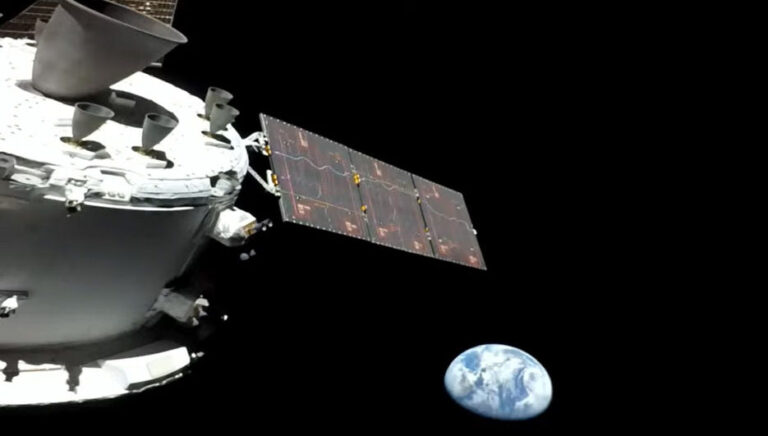 So it was made official today: this fall, Paramount and Warner Bros. are closing the book on their respective grand experiments to start “The Fifth Network.” In about a generation, talking about UPN or the WB will be about as relevant a conversation as a comment about the Dumont Network is today. Now, to be fair, they’re planning a new joint venture, the moronically-named CW network, that’ll have programming from both the Warner Bros. and CBS/Viacom/UPN ends of the spectrum. But UPN and the WB will be DOA. As, perhaps, it could be said that they have been since January 1995.
So it was made official today: this fall, Paramount and Warner Bros. are closing the book on their respective grand experiments to start “The Fifth Network.” In about a generation, talking about UPN or the WB will be about as relevant a conversation as a comment about the Dumont Network is today. Now, to be fair, they’re planning a new joint venture, the moronically-named CW network, that’ll have programming from both the Warner Bros. and CBS/Viacom/UPN ends of the spectrum. But UPN and the WB will be DOA. As, perhaps, it could be said that they have been since January 1995.
I remember turning in for the first night of both that year, and I was doubly invested in the bold attempt to launch networks #5 and #6 – UPN would have the new Star Trek spinoff, and there was a better than even chance that the company I was working for at the time would be launching this area’s first UPN station (which, indeed, it did later that year; click the graphic above for that story). So admittedly, I had an investment in the UPN end of it, and I then proceeded to spend about four years of my professional life trying to push the UPN lineup and sell the UPN dream.
Which means I also got to see loads of classic UPN missteps.
Here’s the thing…I think either of these networks might have survived as cable entities, but when you have to recruit or build affiliate stations in every market in the country, support them with advertising co-op money and materials on an almost daily basis, and do things like custom promo shoots with show talent for them, your expenses skyrocket. Either WB or UPN would have thrived minus those expenses, when all they had to do was promote themselves instead of helping a combined total of 200+ stations all promote themselves against varying degrees of local competition.
And both Warner and Paramount should’ve bloody well known this, because they had both tried before. Paramount tried to launch a fourth network in the late 1970s, using – try to contain your shock here – a revived version of the original Star Trek (give or take a few characters – Leonard Nimoy wanted nothing to do with it) as its flagship show. But studio and network politics were different in the pre-Fox days, and Paramount’s top brass, to say nothing of their investors, didn’t have the confidence and nerves of steel it would take to shake up the broadcast landscape. That task fell to Barry Diller and Fox in the late 80s and early 90s. The Paramount Network never signed on, and that planned Star Trek series mutated into the first movie.
And it was only after Fox had reared its head, sounded its challenge and survived that Warner Bros. attempted its own “micro-network” in the form of PTEN, the Prime Time Entertainment Network. Launched by the “Prime Time Consortium,” a conglomeration including Warner Bros.’ domestic TV syndication arm and Chris-Craft, a major group of U.S. independent stations, PTEN tried to offer packaged nights of programming that could, in theory, fill out the weeknight schedule of a Fox affiliate (back when Fox was only broadcasting 3-4 nights a week). They had decent programming (much of it in the SF and action-adventure vein), but when the opportunity to get in bed with Paramount for a full network schedule beckoned, Chris-Craft bailed on PTEN and took its stations to UPN, and PTEN collapsed under its own weight. PTEN’s flagship show, the woefully under-promoted Babylon 5, actually outlived its network by getting a cancellation reprieve from cable network TNT. (And for what it’s worth, the ever-present threat of Babylon 5’s cancellation actually had a lot more to do with the ever-present threat of PTEN collapsing than it did with any studio heads not “getting” the show.) PTEN breathed its last in 1997.
So what went wrong? I can only speak for the UPN end of things, but the problems were manifold.
- Who was the audience? UPN couldn’t decide who its audience was until it was far too late. For its first season, white-guy buddy sitcoms like Platypus Man were the norm. UPN’s second season (late ’95-early ’96) was arguably its strongest – decent ratings for the otherwise out-of-place Star Trek: Voyager led the network to commission several decent drama series, including Nowhere Man, Live Shot, and action-adventure fare such as Deadly Games, a fun virtual-reality-oriented show which hearkened back to Adam West-era Batman. The third season started to see a shift toward urban comedies, which may well have been UPN’s best move, except that it couldn’t decide how urban it wanted to be. The fall ’98 season boasted some extraordinarily strong shows – period drama Legacy, a new SF franchise-in-the-making called Seven Days, to name just a couple – and some jaw-droppingly weak ones (Desmond Pfeiffer, Shasta McNasty, and the awful ER-in-space non-starter Mercy Point), along with the promise of a Major Franchise Show (the animated Dilbert) to come in 1999. I remember looking around at the faces of other promotions folks from other stations around the country and seeing both elation and total despair. If UPN wanted to go all-urban, we were up for it – truth be told, it was a demographic that wasn’t being served very well on the American television landscape at the time. But instead we had a network that was trying to be all things to all people. I won’t even get into what a dichotomy it was to have urban programming followed by a night of pro wrestling.
- Promotion. Maybe this is an angle that only I could see from my vantage point at work, but UPN never seemed to be able to figure out what its promotional philosophy was. And even when they did settle briefly on an answer to that question, they’d change their minds again five minutes later. I understand it’s an ever-changing broadcast landscape, but UPN made promotion harder on the station end than it ever, ever needed to be. One infamous instance of this was the time they hired New Zealand rap act OMC (of “Isn’t That Bizarre” fame) to create the sound of a new promotional campaign, and built the whole campaign (“you’ll find yourself on UPN”) around that song, and then wound up not using either the song or the campaign – while the poor saps on the station end, like me, had gone home and spent months putting together our own “you’ll find yourself on UPN [station number here]” campaigns. I remember Joe Pasarella and his people at network sweating bullets on that campaign and then taking the heat when it fell through. I probably had a few less than kind words for the network promotions department myself at that point, but it boiled down to this: is it going to mean anything to anyone? If not…don’t waste time on it until the last minute.
- The brass didn’t like it, so we’re not gonna push it. The ever-changing regime at UPN wasn’t exactly known for holding back on its opinions – if you knew where to look. And where to look would again be in the network’s promos. Never mind that Legacy might be playing stupendously well in my market. When a show lost its angels at the network management level, promotion for it vanished off the map. This happened with Legacy, Star Trek: Enterprise and even World Wildlife Foundation Smackdown as the charm of the wrestling franchise wore thin. I understand the network philosophy that you don’t want to waste promo time on a show that’s not getting ratings…but then, not every show that racks up the numbers in L.A. is doing the same in Green Bay, Wisconsin or Fort Smith, Arkansas. On many occasions, UPN made it clear that they really only cared about certain shows, and even then, they only cared how those shows were doing in L.A.
I could go on and on, but missteps were made, suffice to say. When the WB started going great guns with Buffy and then Angel, there was no mistaking that the competition was leaping ahead, rather than relying on tired rehashes of stuff Fox had already done (I forget the name of the show, but it was one of the things the WB rolled out on its first night on the air, a Married…With Children rehash which I now only remember as featuring Nikki Cox). UPN could have adapted its strategy then…but it didn’t. And the WB began to fall back on sequels, spinoffs and rehashes of what it was already doing (how many teen angst dramas can you do on one network?), so they were making their own mistakes as well.
And this is where we land: a bunch of TV stations that didn’t exist until 11 years ago, and where you have two such stations in a given market, one of those stations is going to get shafted out of this deal. That’s a lot of people out of work in an industry whose job market that isn’t exactly favorable at the moment.
UPN had numerous opportunities to seize a niche, and possibly enough viewers to earn a stay of execution, by providing an outlet for an under-represented voice in the American landscape. And they blew it.
So remember the WB and UPN. Maybe Hollywood and the surviving networks (and, indeed, the folks who’ll wind up running “The CW”) should heed the lessons the WB and UPN taught us. Oh, but wait. They didn’t learn those lessons the first time around either, did they?
Um…remember PTEN.










+ There are no comments
Add yours